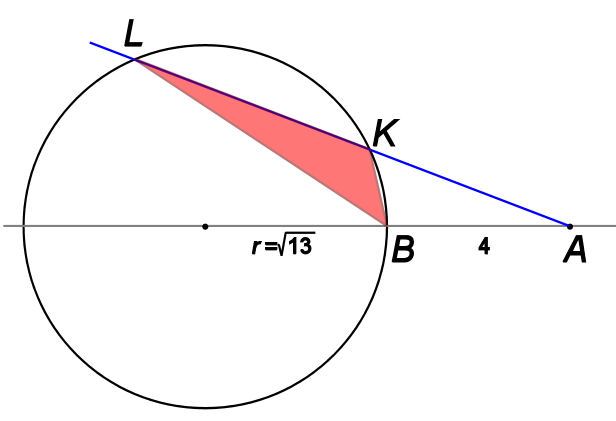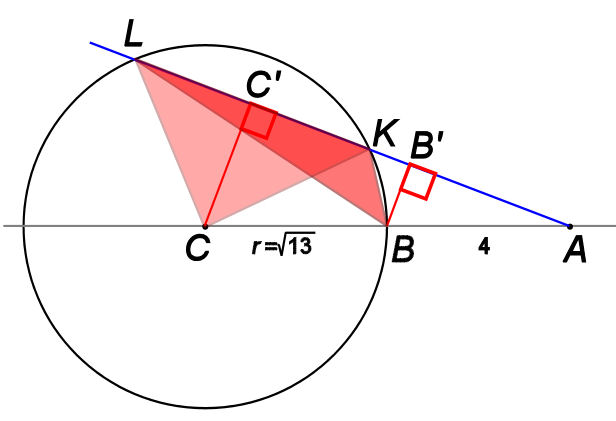I’ve been asked about the following problem from the 2013 AIME 2 a few times, so I decided to blog a couple of solutions for it:
Given a circle of radius
, let A be a point at a distance
from the center C of the circle. Let B be the point on the circle nearest to point A. A line passing through the point A intersects the circle at points K and L. What is the maximum possible area for
?
(The AIME problem, in typical AIME-style, asks the contestant to extract a single integer after putting the answer in a particular form.)
Here’s an illustration of the situation.
We must find the maximal area of the red triangle.
Solution 1. If we regard LK as the base of the triangle, the height is the length of the perpendicular to LK dropped from B. If we also drop the perpendicular to LK from the center C, we get a pair of similar right triangles (triangles ABB’ and ACC’ in the figure below).
From the figure, we can see that BB’ : CC’ as , and this is also the ratio of the areas of the two red triangles. Hence, maximizing the area of one is the same as maximizing the area of the other.
The area of isosceles triangle CKL is , and is maximized when
is right. This configuration can be achieved because as the line AL rotates down from the tangent, the arc of the circle cut off increases from 0 degrees to 180, and will hit 90 at some point. At this point, the area of triangle CKL is 13/2, and so the answer to the problem is
.
Solution 2. This time, let’s realize the area of BKL as the areas of the green and blue isosceles triangles, less the area of isosceles triangle CBL in the figure below.
This area can be expressed as . So we have to maximize
subject to the constraint that a and b are related by the fact that L, K, and A are colinear. Using trigonometry, we can readily compute the Cartesian coordinates of points L, K, and A, and use a proportion to express the fact that these 3 points are colinear:
.
This can be rearranged and simplified as follows:
or, using the angle-sum formula for sine,
.
We substitute this into our formula for the area of triangle BKL and find that the area is
.
This is maximized when is right and its maximum value equals what we got for the first solution (as it should!).
* * *
Would you recognized essentially this same problem if you are asked to maximize instead?



